Want to make a low-sodium hot sauce that still is fermented? This recipe uses raw ACV or brewed kombucha for a fermented salt-free hot sauce!
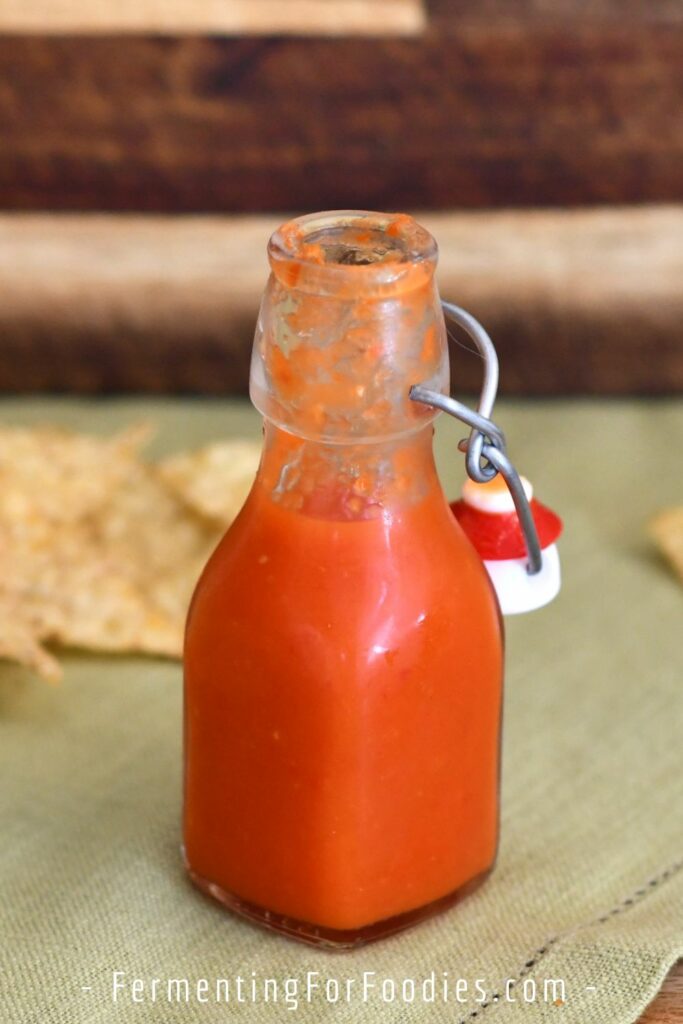
About 8 months after Fermenting Made Simple, came out, I received an email from someone who had purchased my cookbook and wanted to make a low-sodium (or salt-free) hot sauce. –> Both of the hot sauces in that cookbook are salt-brine fermented.
Fermenting with apple cider vinegar
Together, we came up with a recipe for a salt-free hot sauce based on an ACV ferment. Raw apple cider vinegar is a really good culture. It contains yeast and bacteria. The yeasts convert sugar into alcohol. Then the acetic acid bacteria convert the alcohol into acetic acid.
Hot peppers are quite low in sugar, so this recipe includes a bit of added sugar (to feed the ferment, not for sweetness).
The only trick with this low sodium hot sauce is that the apple cider vinegar adds a lot of acidity. Whereas, the traditional salt-brined hot sauce only has the acidity from the fermentation. So expect it to be a tangier hot sauce than you would typically expect.
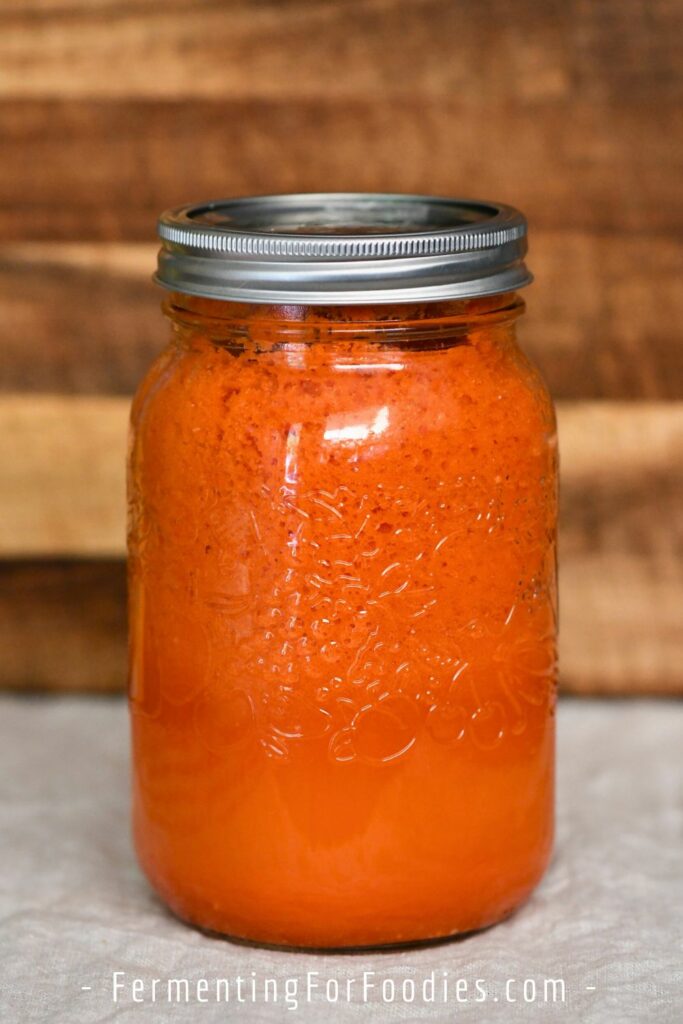
Playing with flavor
What’s the point in homemade hot sauce if you’re not going to experiment with flavor?!
There are plenty of ways to create a unique hot sauce with this recipe. The goal is to keep the overall amount of ingredients the same, however, you don’t just have to use peppers.
- Combine 3 oz of chili peppers with 9 oz of peach or pineapple for a bit of sweetness.
- Use not-so-hot jalapenos or super hot habaneros.
- Replace part of the peppers with onion for a savory flavor
- If you like flavor but not heat, skip adding hot peppers and use sweet red bell pepper instead.
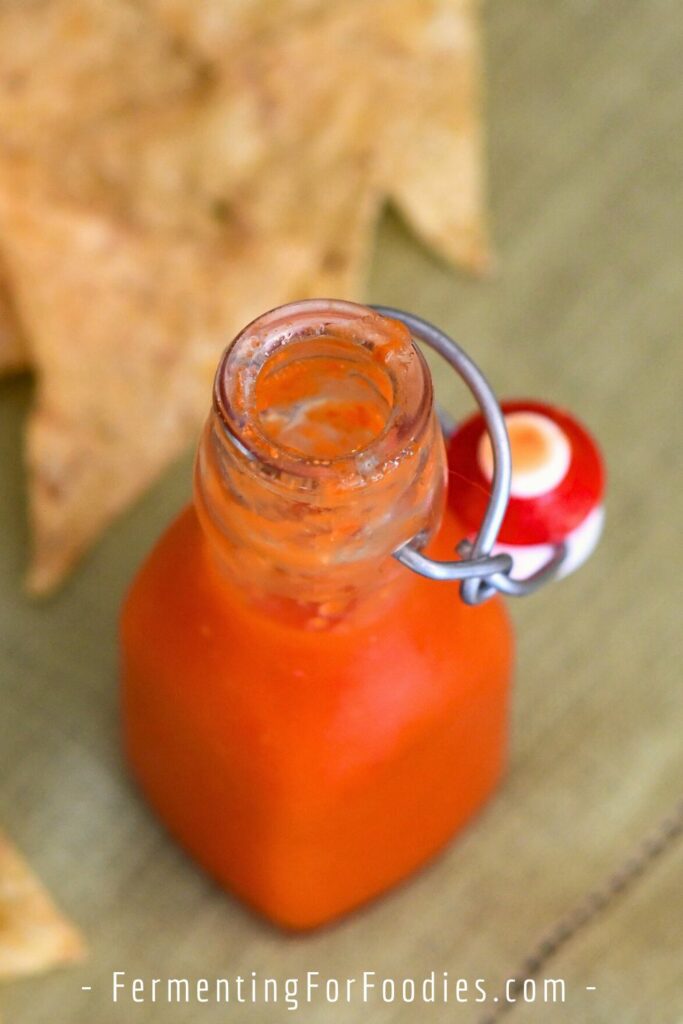
Here’s a short video of the steps involved with putting together this very simple hot sauce:
Low Sodium Fermented Hot Sauce
Want to make a low-sodium hot sauce that still is fermented? This recipe uses raw ACV or brewed kombucha for a fermented salt-free hot sauce!
- Prep Time: 5 minutes
- Total Time: 5 minutes
- Yield: 1 1/2 cups 1x
- Category: Condiment
- Method: Fermented
- Diet: Low Salt
Ingredients
- 12 oz (about 1 1/2 cups) peppers and other flavors (see section above for options)
- 2 cloves of garlic
- 1/4 cup of raw apple cider vinegar (or kombucha)
- 1 Tbsp of sugar (to feed the ferment)
- 1/2 tsp of salt (optional, added after fermenting)
Instructions
- I don’t recommend using 100% chili peppers unless you want to make an extremely HOT sauce. I usually use a mix of chili peppers and sweet peppers. Alternatively, you can replace some of the peppers with other flavors. I enjoy making hot sauce with some fruit. See the section above for some recommended flavor combinations.
- Wash and take the stems off the peppers. Place them in the blender with the garlic. The heat will depend on the variety of pepper used and whether you keep the seeds. I recommend including the seeds for maximum spiciness.
- Add the apple cider vinegar and sugar to the blender. Pulse until everything turns into a smooth paste. Scrape the pepper smoothie into a jar glass for fermenting. It doesn’t need to be a special fermentation jar. Just use a lid that will allow CO2 to escape as it ferments. As you can see from the photos, I use a regular mason jar, however, I don’t tighten the lid.
- Place the jar somewhere dark. A kitchen cupboard is perfect. Let the hot sauce ferment for at least 3 days and up to 14 days. It will slowly become less sweet and more acidic the longer it ferments. Hot peppers and apple cider vinegar are both prone to contamination with kahm yeast. If you are concerned about kahm yeast, then I recommend only fermenting for 3 to 5 days. However, kahm yeast is perfectly safe and will naturally die off as the sugars are fermented.
- Stir the hot sauce every 2 to 3 days. Oxygen is a necessary part of this ferment.
- When it’s finished fermenting, the hot sauce can be strained or put through a food mill to remove any large seeds. However, this is just for aesthetics and it’s fine to use the hot sauce without straining.
- Feel free to add salt after fermenting. I’ve recommended 1/2 tsp, but it’s fine to use more or less depending on taste. Store the finished hot sauce in an air-tight container in the fridge. It will last for up to 1 year. Alternatively, freeze the hot sauce for long-term storage.
Notes
- I have a really good blender, so my hot sauce is super smooth. However, before I got my current blender, I used an inexpensive blender that left the seeds whole. It’s fine to make a “rustic” looking hot sauce with whole seeds.
- I usually bottle part of my hot sauce and freeze the rest in straight-sided jam jars. My fridge doesn’t have enough space to store all my ferments!
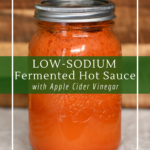
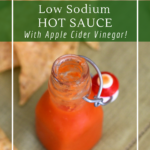

Leave a Reply